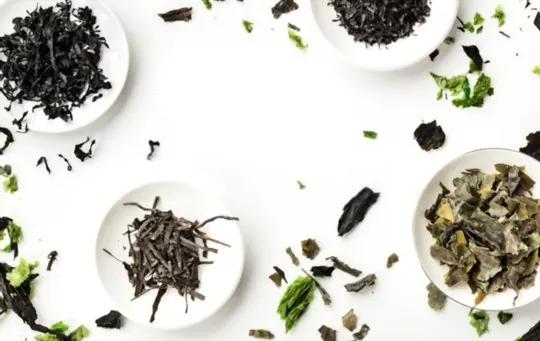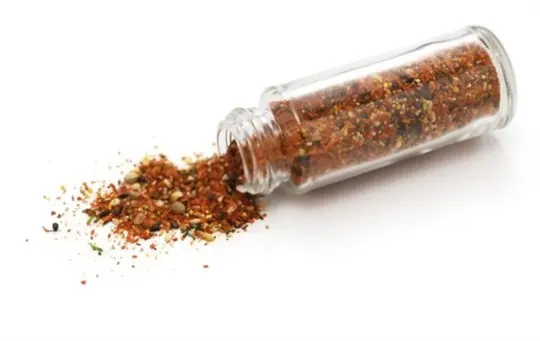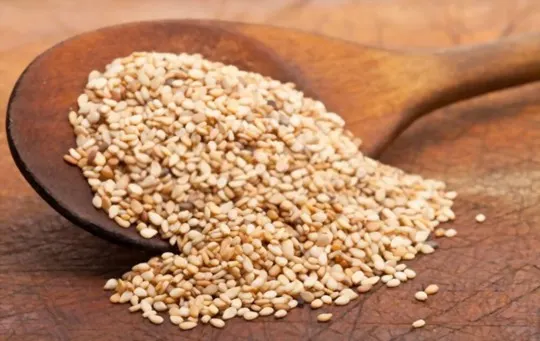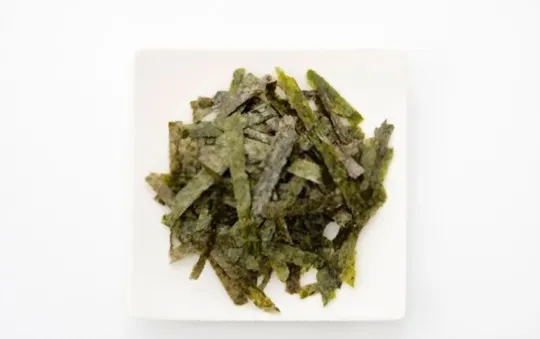You know Furikake as the delicious condiment you sprinkle on your rice, but do you know what it is made of?
Here, we uncover the secrets behind Furikake and explore the five best substitutes for those looking for something different.
With a few simple swaps, you can introduce variety and flavor to your meals.
What is Furikake?

Furikake is a Japanese seasoning that adds flavor and texture to any dish.
It is made from dry ingredients such as dried fish, sesame seeds, seaweed, sugar and salt.
The ingredients are usually mixed together to create a powdery blend of flavors that can be sprinkled over rice or vegetables.
Traditionally, the mixture was served over white rice as an accompaniment to a fish-based meal.
Furikake is now used in many Japanese dishes and is often used as a versatile topping for all kinds of snacks.
From breakfast onigiri to savory eggs dishes like tamagoyaki and even desserts such as wagashi, furikake can be added to any dish for a unique flavor boost.
While it may not have the same potency of some other seasonings, its versatility makes it the perfect secret ingredient for anything from salads to stir-fries.
How to use furikake: It’s best not to sprinkle too much furikake in one go — start off with a small amount, taste it and adjust the amount until you find the right balance for your dish.
Generally speaking, you should use about 1 teaspoon per cup of cooked white rice or 150g of vegetables before adjusting as needed for more intense flavors — more isn’t always better.
When adding furikake to snacks like sandwiches or onigiri, measure out small quantities at first so that you don’t overwhelm your food with too much flavor.
Furikake also mixes well with mayonnaise so if you want an extra punchy hit of flavor in your sandwiches or pasta dishes mix it into some mayo before adding it in — Yum.
You can also experiment with adding different combinations of ingredients when making homemade furikake if you don’t have access to store-bought varieties — just mix up whatever you have on hand.
If using handmade (or store bought) mixtures be sure to store correctly so they stay fresh longer.
Store them in airtight containers at room temperature and away from direct sunlight or humidity sources like sinks or bathrooms – keep them out of reach of children too.
Tips: For those who avoid heavily processed foods there are plenty of healthy alternatives available.
Some popular options are nutritional yeast flakes (for their cheesy taste), Tororo Kombu (a type of dried seaweed), homemade Furikake mixes with various nuts & seeds and Gomasio/Shichimi Togarashi (a combination of ground sesame seeds & spices).
If making this from scratch be sure to finely grind all ingredients until there are no large lumps left – this will give a more even distribution when sprinkling over food items.
5 Best Furikake Substitutes to Consider
While furikake is widely available in Japan, it can be hard to find in the West.
Luckily, there are several alternatives that can serve as a great substitute for furikake.
Here are five of the best substitutes for furikake:
1 – Homemade Furikake Seasoning

Making your own furikake seasoning at home is a great way to ensure the freshest and most flavorful toppings for your dishes.
Start with a base of sesame seeds, furikake flakes or katsuobushi (dried bonito flakes), and then add several other ingredients of your choice such as dried shiitake mushrooms, seaweed, crushed red pepper, minced ginger root or whatever else you can think of.
Mix all the ingredients up in a bowl and store them in an airtight container until you’re ready to use them.
This homemade version adds a rich umami flavor to any dish.
2 – Nori Flakes

Nori flakes are often used as a seaweed-based substitute for furikake.
It is made from preserved sheets of roasted nori seaweed that have been shredded into small pieces.
Nori flakes are milder in flavor than furikake and work best as a topping for cooked fish, boiled or steamed vegetables, eggs, and salads.
They contain far less sodium than traditional furikake and tend to be less expensive.
However, nori flakes can also become soggy more quickly when they come in contact with liquids due to the higher content of moisture found in the dried leaves when compared to other ingredients used in furikake.
3 – Schichimi Togarashi

Schichimi Togarashi is a Japanese seven-spice blend that often includes ingredients like red pepper, sansho (Japanese pepper), ginger, orange zest, sesame seeds, seaweed flakes and hemp seeds.
This blend gives a salty, spicy flavor profile to dishes unlike furikake’s distinct umami flavor.
It can be used as a condiment or as an ingredient itself.
Sprinkling it over noodle dishes, fries and popcorn gives them a flavorful kick.
It is also great as a rub for fish or meat or in soups and stews for an extra depth of flavor.
4 – Salt + Sesame Seeds

This tried-and-true combination is perhaps a classic way of adding a bit of saltiness and crunch to your dish.
While salt alone would be too heavy, the addition of sesame seeds really helps to create an interesting flavor profile.
You won’t get the same umami flavor or complexity as you do with Furikake, but it’s definitely a good option if you’re looking for a quick substitute.
To make this version, mix together 1 teaspoon salt and 2 tablespoons sesame seeds in a small bowl.
Sprinkle it over whatever dish you’re making and enjoy.
For an even more intense flavor, toast the sesame seeds ahead of time before mixing them with salt.
5 – Crumbled Nori (seaweed), Sesame Seeds

Nori or seaweed flakes that have been crumbled to a fine texture can be a great substitute for furikake.
A large bag of dried seaweed snacks will likely cost much less than the pre-made furikake, and you can prepare your own mix of ingredients to create the perfect blend of flavors.
To assemble your own version at home, simply crumble up some nori (seaweed) sheets and sprinkle in some sesame seeds.
Depending on your desired flavor profile, you could also add some salt, pepper, and/or other spices.
For an added punch of umami flavor, you could even try adding dried bonito flakes (katsuobushi), which are made from skipjack tuna.
This simple substitution for furikake can easily be tailored to your individual taste and is sure to provide a burst of deliciousness to any dish.
Conclusion
In conclusion, furikake is a staple item in Japan and it’s loaded with flavor.
It typically contains various fish, seaweed, sesame seeds, and sugar, which gives it a sweet-salty taste.
Though it can be difficult to find traditional furikake outside of Japan, there are many noteworthy replacements like seaweed flakes or garlic powder for a gourmet touch.
Other alternatives such as bonito flakes or sesame salt can also produce similar results.
These substitutes are just a few of the delicious ingredients that you can use to add flavor and texture to your favorite dishes.

5 Best Furikake Substitutes to Consider
Ingredients
- 1 – Homemade Furikake Seasoning
- 2 – Nori Flakes
- 3 – Schichimi Togarashi
- 4 – Salt + Sesame Seeds
- 5 – Crumbled Nori seaweed, Sesame Seeds
Instructions
- Choose your preferred substitute from the list of options.
- Organize all of your ingredients.
- Use the proper substitute to cook your recipes.

Carrie is a food writer and editor with more than 15 years of experience. She has worked for some of the biggest names in the food industry, including Bon Appétit, Food & Wine, and Martha Stewart Living.
As the Editor in Chief of IntroChicago.com, Carrie oversees all of the content on the site. She also manages the team of contributing writers and editors, who help to create delicious recipes, helpful tips, and informative articles that you’ll find on the site.
A native of the Chicago area, Carrie is passionate about all things food. She loves trying new restaurants and experimenting with new recipes in her kitchen. She’s also a graduate of the Culinary Institute of America, so she knows a thing or two about food!
